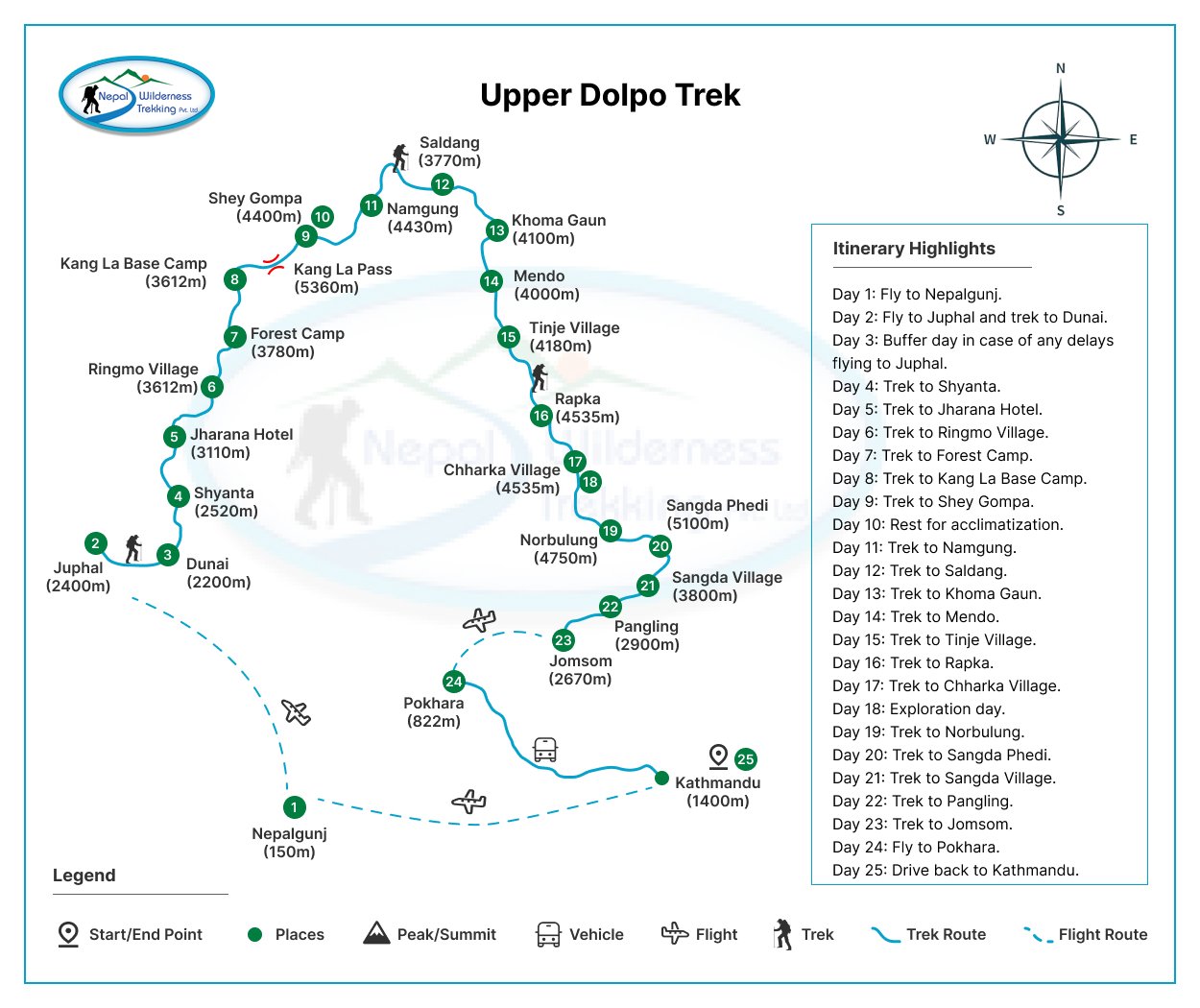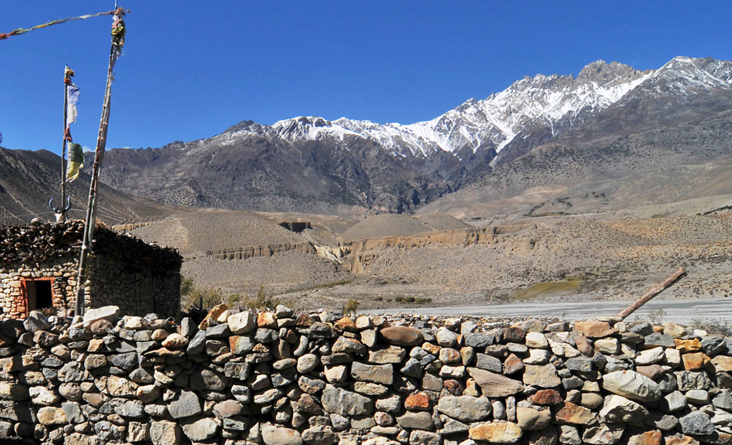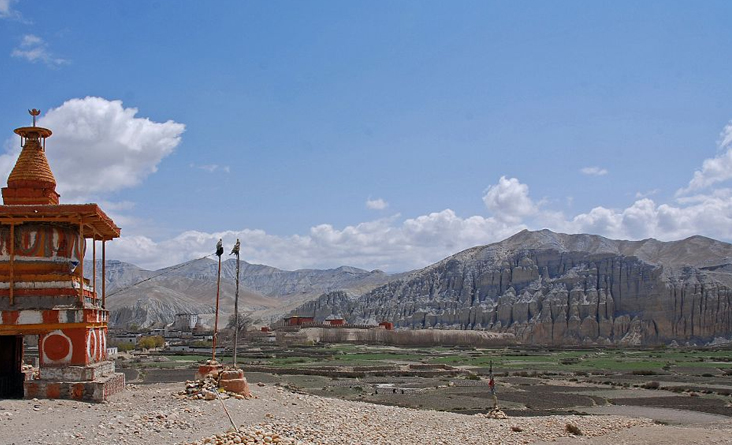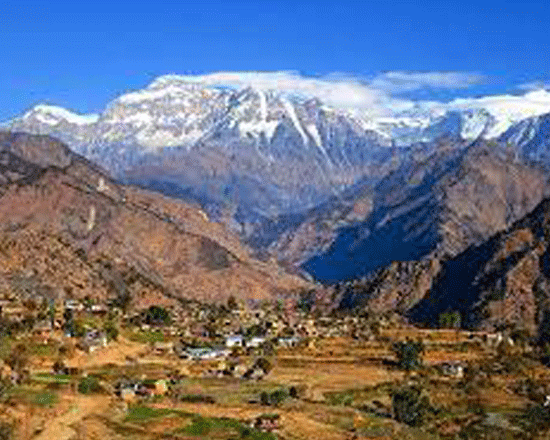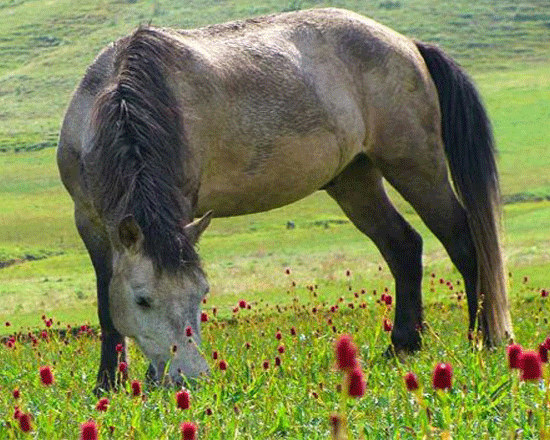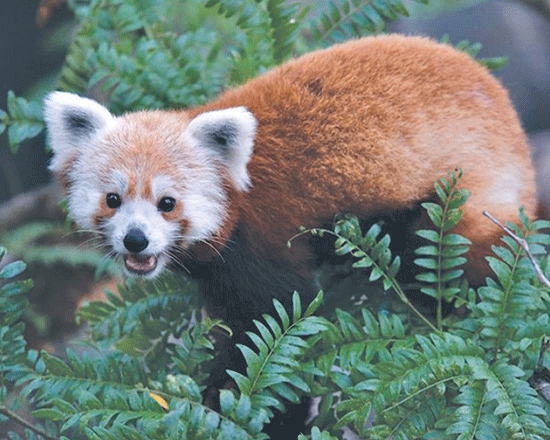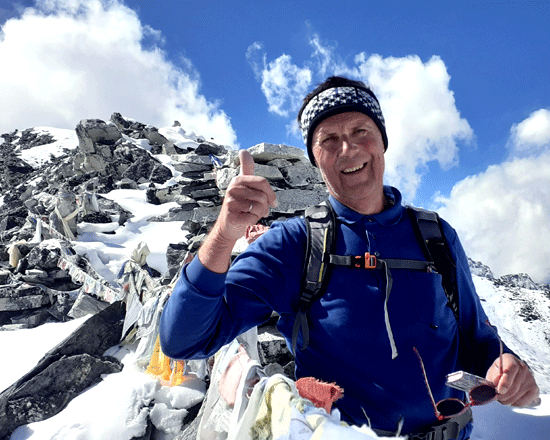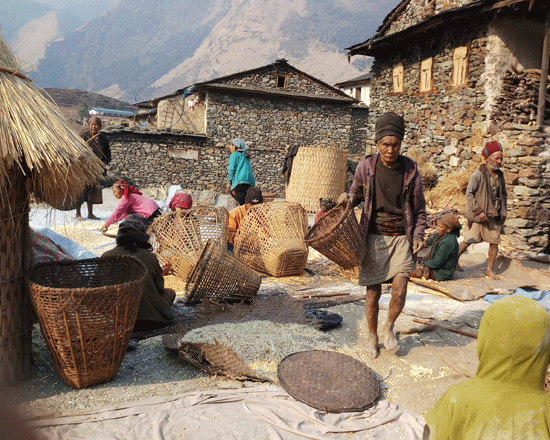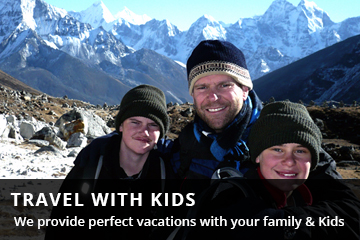Upper Dolpo Trek
Upper Dolpo Trek
Wilderness TrekkingTrip Facts
Since the terrain can be hard and the days long, hikers on these treks should be in good physical condition and have some previous mountain walking experience. Steep climbing may be involved, although it is never necessary to use ropes. Treks at this level can he arranged for periods of 16 to 21 days. Typically, a gradual ascent through a green river valley will lead you up to a number of high passes, where you will reach the altitude of 5416m. Often times, you will get a close insight into the Tibetan culture. Participants should expect to trek above 5416m/17872ft.
Mode of Travel : Flight/Land100%
Overview
The Dolpo Trek 25 days package itinerary
The Upper Dolpo Trek is one of Nepal’s most mesmerizing and remote trekking routes, offering a unique blend of natural beauty, cultural richness, and spiritual serenity. Tucked away in the northwest corner of Nepal, the Upper Dolpo region borders the Tibetan Plateau but remains largely unexplored. The area has preserved its natural beauty, untouched by the waves of modernization. This makes it an essential destination for trekkers who value serenity.
History
The Upper Dolpo Trek was opened to tourism only in 1989, the Dolpo Trek is a restricted area within Shey Phoksundo National Park. The Dolpo Trekking route is 4,000 meters long and immerses you in Tibetan cultural influences. The journey commences from Juphal, a modest airstrip nestled in the Jumla district, and follows the age-old trade route that connects Dolpo with Tibet. The trek meanders through a symphony of landscapes, from verdant forests to dry deserts, deep canyons, and lofty mountain passes.
One of the most captivating aspects of the Upper Dolpo Trek is the opportunity to explore the traditional lifestyle and culture of the Dolpo people. These residents have inhabited the region for centuries, preserving their unique culture and rituals. Rooted in Tibetan heritage, they practice Bon Buddhism, a shamanistic faith predating Tibetan Buddhism. Their distinct attire, including woolen chubas adorned with Topi hats and vibrant aprons, stands out. The Dolpo people excel in traditional crafts such as weaving, woodcarving, and metalwork, showcasing their artisanal finesse.
Shey Phoksundo National Park
Shey Phoksundo National Park enhances the trek’s allure, serving as a sanctuary for rare and endangered species like snow leopards, musk deer, and blue sheep. At its heart lies the resplendent Phoksundo Lake, a turquoise gem nestled among towering peaks. The Upper Dolpo Trek is a difficult venture that demands robust physical fitness and prior trekking experience. The optimal period to undertake this journey is from May to October, a window of clear skies and prime trekking conditions.
The Upper Dolpo beckons those seeking a unique and off-the-beaten-path expedition in Nepal. With its awe-inspiring landscapes, cultural heritage, and rare wildlife, this odyssey unveils a realm of unparalleled grandeur.
Trans-Himalayan Journey: Unearthing Upper Dolpo’s Essence
The Upper Dolpo trek known as the Trans-Himalayan Trek Nepal, unfolds within mid-west Nepal. This itinerary takes you through the icy domains of the famous Shey Gompa Monastery beyond Phoksundo Lake, near Tibet. While the Lower Dolpo trek grants access to Phoksundo Lake, the Upper Dolpo trek immerses you in the spiritual core of the Dolpo Region, renowned as the Crystal Monastery. Pilgrims believe that passing through this mountain liberates one from the cycle of life and death.
A tapestry of traditional Tibetan cultures intertwined with snow leopards, blue sheep, and highland grazing yaks awaits in Upper Dolpo. The trail winds across five imposing passes: Kang La (5,380m), Saldang La (5,060m), Chharka La (5,015m), Sangda La (5,515m), and lower Sangda La (5,035m).
The Upper Dolpo Circuit trek to Jomsom itinerary integrates segments of the Great Himalayan Trail, uniting Nepal with the Tibetan border. Geographically within Nepal yet culturally reminiscent of Tibet, this region resonates with the Upper Mustang trek.
Ancient Buddhist monasteries
Ancient Buddhist monasteries, alongside pre-Buddhist Bon Po monasteries, dot the Upper Dolpo region, preserving the last vestiges of traditional Tibetan heritage. One such gem is the Shey Gompa, a Buddhist sanctuary at 4,200m within the Shey Phoksundo rural municipality of Dolpa. Named Shey Gompa or Crystal Monastery by Tibetans, this village traces its origins to the 11th century. This monastery is the spiritual center of the Upper Dolpo trek. It is housed in a red two-story building decorated with detailed Buddhist artworks. In 1220 BS, the Kagyu tribe initiated a festival symbolizing triumph over evil spirits, the Rakshas.
A paramount highlight of the Upper Dolpo experience is the captivating Phoksundo Lake, unrivaled on the trek circuit. Plummeting to depths exceeding 1,500 feet, the lake’s cerulean waters are encircled by dense pine forests and the towering magnificence of the Himalayan skyline.
Starting the Upper Dolpo Trek, you begin with a scenic flight from Kathmandu to Juphal via Nepalganj. En route, you enjoy panoramas of picturesque landscapes and vast mountain ranges. Wending through expanses and mixed woodlands, the trail escorts you to Ringmo Lake, Say Phoksundo Lake, and indigenous cultures. A spiritual haven named Gombas Monastery graces Crystal Mountain, home to semi-precious gems and historical edifices. As you traverse villages inhabited by devout Buddhists, the symphony of Tibetans conversing in their native tongue remains in the air. The ascent culminates in Musi Gaun, affording a glimpse of the Tibetan border before advancing toward Jomsom through the Sangda La pass (5,111 meters). This marks the inception of the Upper Mustang Trek, the Tilicho Pass Trek, the Dhaulagiri Pass, and the Dhampus Peak Climb.
Retreats and Refuges: A Haven for Rest
Accommodations along the Upper Dolpo Trek vary. Chharka Bhot offers only basic tea house rooms, while other locals are exclusively suited for camping. However, Dunai Bazaar, Phoksundo Lake, and Jomsom promise cozy lodgings for the Upper Dolpo Odyssey. Nestled in the region’s northeastern confines, Chharka Bhot is a rural village situated along the Tibetan border. The Shree Chharka Bhot Basic School is a government institution facilitating education for approximately 120 children, including those from adjacent hamlets.
A Glimpse into Local Gastronomy
Upper Dolpo’s indigenous fare includes staples like Champa, boiled potatoes, and Su Chya, as well as yak and goat meats. The region’s challenging topography denies expansive arable lands, limiting lucrative crop cultivation at such high altitudes.
Guided Ventures: Expedition with Nepal Wilderness Trekking
Our expert guides and well-equipped porters seamlessly arrange the western expanse of the Dolpo trekking package. Experience this journey through our comprehensive Nepal wilderness trekking packages.
Upper Dolpo Trek Distance
The Upper Dolpo Trek typically covers around 230-270 kilometers (about 143-168 miles), depending on the specific route taken and side trips included. This trek usually takes 18-24 days to complete. It is renowned for its remote and rugged terrain with views of the Himalayas and unique cultural experiences with the local Tibetan-influenced communities.
Highlights of the Upper Dolpa trek
- Scenic flight to Juphal via Nepalganj from Kathmandu
- The challenging trek through the remote highest mountains
- Discover the unique lifestyle and culture of the mountain people
- Legendary Shey Gompa Monastery
- Explore majestic monasteries built over centuries
- Journey through miraculous landscapes
The Upper Dolpo Trek promises a unique and unforgettable adventure through one of Nepal’s most remote and culturally rich regions.
Detail Itinerary
- Day 01: Pick up at your hotel drive to the airport and Fly to Nepalganj Elevation 150 meters above sea level.
- Day 02: Fly to Juphal 2400m, trek to Dunai (2200m) Trekking hours: Approximately 3-4 hours. 8 kilometers.
- Day 03: Buffer day in case of any delays flying to Juphal
- Day 04: Trek to Shyanta (2520m) Trekking hours: Approximately 5-6 hours. 12-14 kilometers.
- Day 05: Trek to Jharana Hotel (3,110m) Trekking hours: Approximately 6-7 hours. 10-12 kilometers.
- Day 06: Trek to Ringmo Village (3,612m) Trekking hours: Approximately 5-6 hours. Distance: Approximately 8-10 kilometers.
- Day 07: Trek to Forest Camp (Salla Ghari) (3780m) Trekking hours: Approximately 5-6 hours. Trekking distance: Approximately 8-10 kilometers.
- Day 08: Trek to Kang La Base Camp (4,600m) Trekking hours: Approximately 6-7 hours. 10-12 kilometers.
- Day 09: Trek to Shey Gompa (4400m) via Kang La Pass (5360m) Trekking hours: Approximately 7-8 hours. Trekking distance: Approximately 12-14 kilometers.
- Day 10: Rest for acclimatization
- Day 11: Trek to Namgung (4430m) via Sela Pass (5010m) Trekking hours: Approximately 6-7 hours. Trekking distance: Approximately 10-12 kilometers.
- Day 12: Trek to Saldang (3770m) Trekking hours: Approximately 5-6 hours.Trekking distance: Approximately 8-10 kilometers.
- Day 13: Trek to Khoma Gaun (4,100m) Trekking hours: Approximately 6-7 hours. Trekking distance: Approximately 10-12 kilometers.
- Day 14: Trek to Mendo (4,000m) Trekking hours: Approximately 5-6 hours. Trekking distance: Approximately 8-10 kilometers.
- Day 15: Trek to Tinje Village (4,180m) Trekking hours: Approximately 6-7 hours. Trekking distance: Approximately 10-12 kilometers.
- Day 16: Trek to Rapka (4,535m) Trekking hours: Approximately 6-7 hours. Trekking distance: Approximately 8-10 kilometers.
- Day 17: Cross Chharka La (5,015m), trek to Chharka Village (4,110m) Trekking hours: Approximately 7-8 hours. Trekking distance: Approximately 12-14 kilometers.
- Day 18: Exploration day at Chharka village
- Day 19: Trek to Norbulung (4,750m) Trekking hours: Approximately 6-7 hours.Trekking distance: Approximately 10-12 kilometers.
- Day 20: Cross Higher Sangda La (5,185m), trek to Sangda Phedi (5,100m)
- Trekking hours: Approximately 7-8 hours. Trekking distance: Approximately 12-14 kilometers.
- Day 21: Cross Lower Sangda La (5,035m), trek to Sangda Village (3,800m) Trekking hours: Approximately 6-7 hours. Trekking distance: Approximately 10-12 kilometers.
- Day 22: Trek to Pangling (2,900m) Trekking hours: Approximately 6-7 hours. Trekking distance: Approximately 10-12 kilometers.
- Day 23: Trek to Jomsom Trekking hours: Approximately 7-8 hours. Trekking distance: Approximately 12-14 kilometers.
- Day 24: Fly to Pokhara overnight at Pokhara,
- Day 25: Tourist bus to Kathmandu 6-hour drive, drop to your hotel.
Cost Included
- All land transfer and flight tickets, ktm- Juphal, Jomsom- Pokhara.
- Pokhara to ktm by tourist bus.
- National Park permits TIMS permits and special Upper Dolpo permits fees.
- Tent Accommodation and three times meals a day during the trekking.
- Fully escorted trek with fluent English-speaking license holder local Sherpa Guide and necessary porters.
- All programs are according to the itinerary on full board.
- Wages, equipment, insurance, and other facilities to staff.
Cost Excluded
- Hotel in Kathmandu
- Travel Insurance (which is covering helicopter rescue ).
- Medical evacuation in case of emergency.
- Personal expenses.
- All bar bill.
- Items of personal nature, i.e., Soft/hard drinks, tips, etc.
Trip Map
